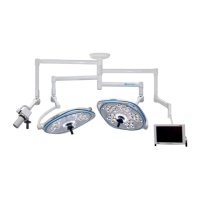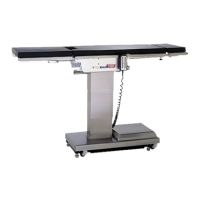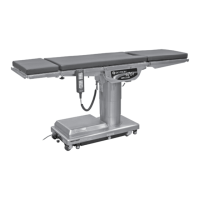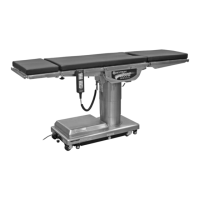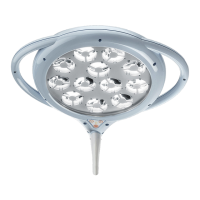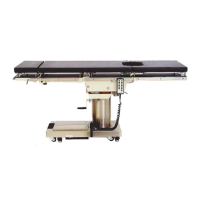Page 17
Figure 16.
When an angled cavity is to be illuminated, at least
one of the lightheads should be positioned to be
perpendicular to the bottom of the cavity.
For head and perineal work, the lights should be
positioned as they would for a dual system but with
a satellite on each side of the surgeon.
Bell-Shaped Cavities
For most surgical procedures the lighthead will be
properly focused with all the light beams converged
in one spot at the bottom of the surgical cavity.
However, in the case of a bell-shaped cavity (for
example - total abdominal hysterectomy on an
obese patient), focusing at the bottom of the cavity
may cause more shadow problems. The focal point
for the light beams should be above the bottom of
the cavity. See figure 17.
Figure 17.
Beyond the focal point, the light beams spread out
like an inverted cone and will more evenly spread
the light throughout the bell-shaped cavity.
Other Illumination Considerations
Close attention to surgical light intensity during the
case as well as good quality general illumination
in the room will help to minimize eye fatigue of
surgical personnel.
Dark surgical drapes will help to reduce reflectance.
White drapes should be avoided at all times be-
cause of high reflectance.
The use of matte and satin finish instruments and
retractors also helps to reduce eye fatigue.
LIGHT
BEAMS
FOCAL
POINT
BELL SHAPED
CAVITY

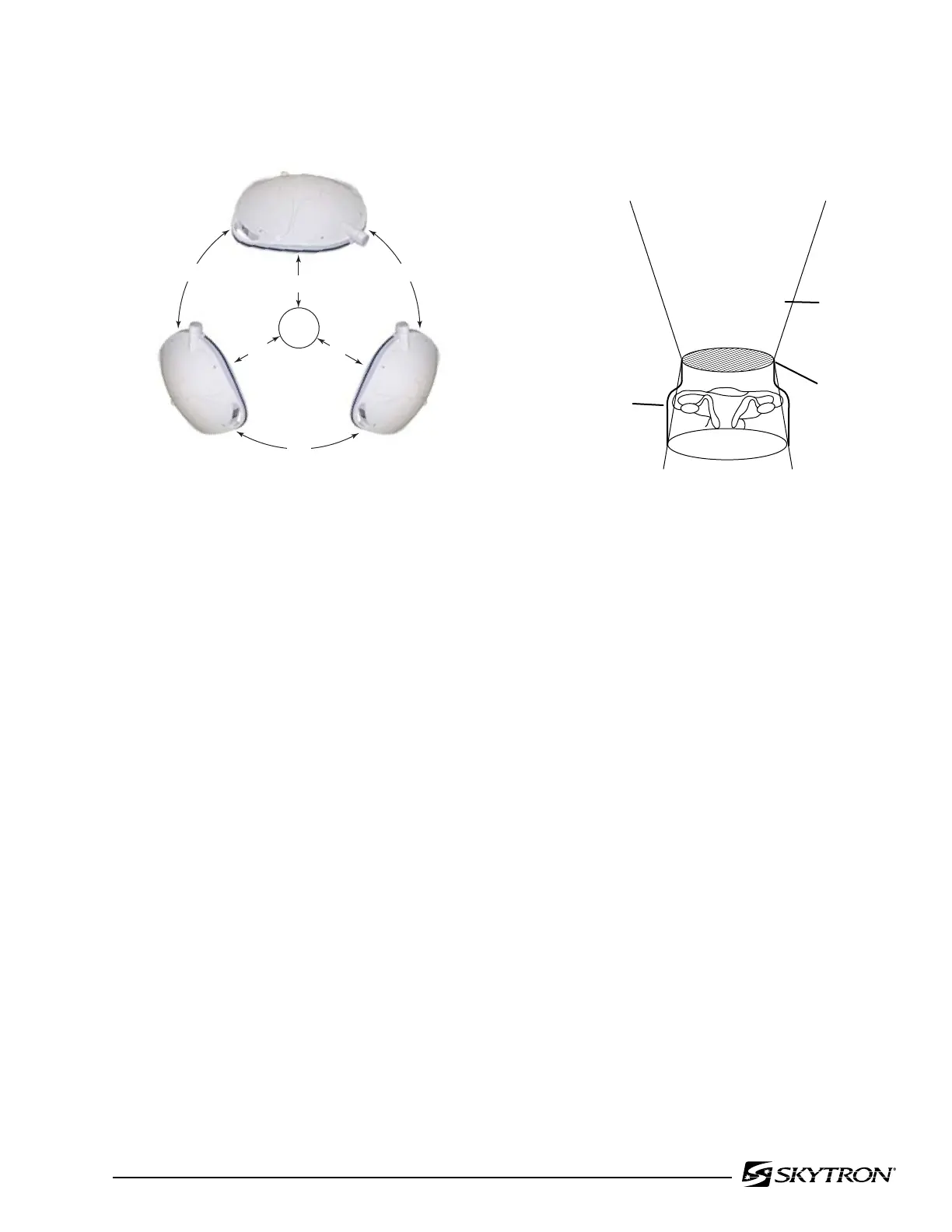